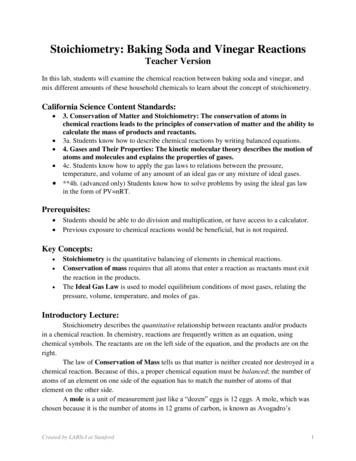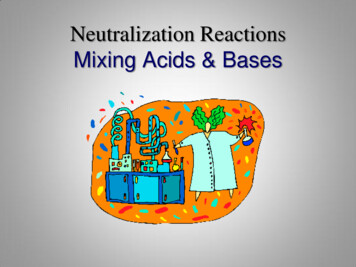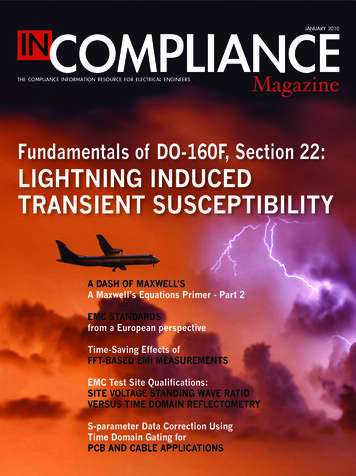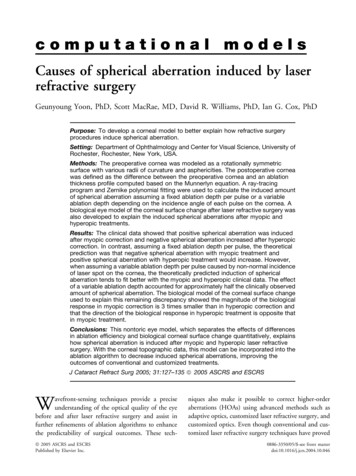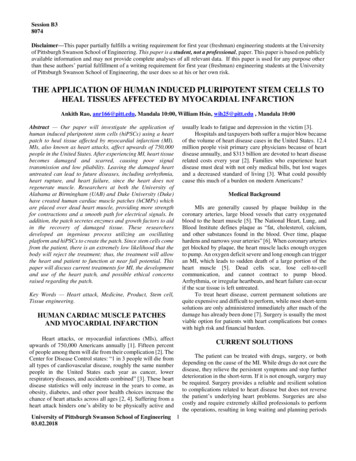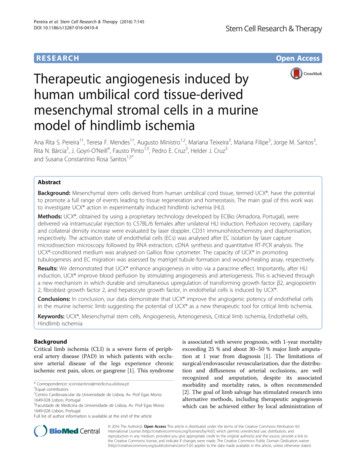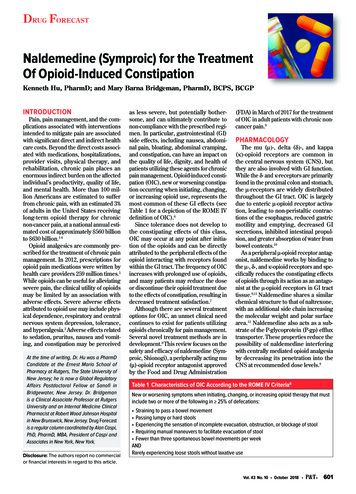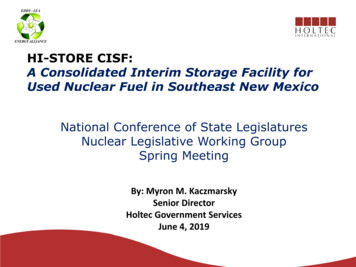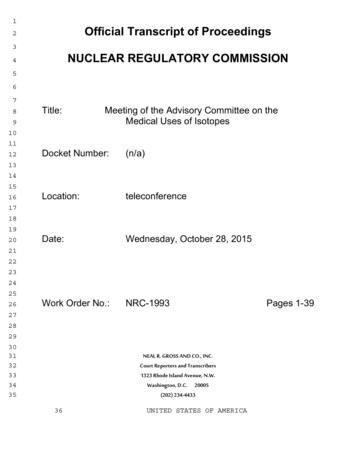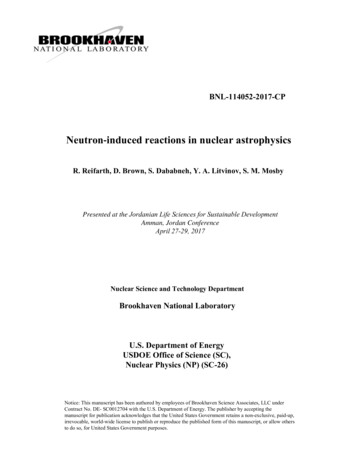
Transcription
BNL-114052-2017-CPNeutron‐induced reactions in nuclear astrophysicsR. Reifarth, D. Brown, S. Dababneh, Y. A. Litvinov, S. M. MosbyPresented at the Jordanian Life Sciences for Sustainable DevelopmentAmman, Jordan ConferenceApril 27-29, 2017Nuclear Science and Technology DepartmentBrookhaven National LaboratoryU.S. Department of EnergyUSDOE Office of Science (SC),Nuclear Physics (NP) (SC-26)Notice: This manuscript has been authored by employees of Brookhaven Science Associates, LLC underContract No. DE- SC0012704 with the U.S. Department of Energy. The publisher by accepting themanuscript for publication acknowledges that the United States Government retains a non-exclusive, paid-up,irrevocable, world-wide license to publish or reproduce the published form of this manuscript, or allow othersto do so, for United States Government purposes.
DISCLAIMERThis report was prepared as an account of work sponsored by an agency of theUnited States Government. Neither the United States Government nor anyagency thereof, nor any of their employees, nor any of their contractors,subcontractors, or their employees, makes any warranty, express or implied, orassumes any legal liability or responsibility for the accuracy, completeness, or anythird party’s use or the results of such use of any information, apparatus, product,or process disclosed, or represents that its use would not infringe privately ownedrights. Reference herein to any specific commercial product, process, or serviceby trade name, trademark, manufacturer, or otherwise, does not necessarilyconstitute or imply its endorsement, recommendation, or favoring by the UnitedStates Government or any agency thereof or its contractors or subcontractors.The views and opinions of authors expressed herein do not necessarily state orreflect those of the United States Government or any agency thereof.3
Reifarth et al, Neutron-induced reactions in nuclear astrophysicsNeutron-induced reactions in nuclear astrophysicsRené Reifarth1,*, David Brown2, Saed Dababneh3,Yuri A. Litvinov4, Shea M. Mosby51Goethe University Frankfurt, Max-von-Laue- Str. 1, Frankfurt, Germany2Brookhaven National Laboratory, Upton, NY, USA3Department of Physics, Faculty of Science, Al-Balqa Applied University, Amman, Jordan4GSI Helmholtz Zentrum für Schwerionenforschung, Darmstadt, Germany5Los Alamos National Laboratory, Los Alamos, USA*reifarth@physik.uni-frankfurt.deAbstract:The quest for the origin of the chemical elements, which we find in our body, in our planet(Earth), in our star (Sun), or in our galaxy (Milky Way) could only be resolved with a thoroughunderstanding of the nuclear physics properties of stable and unstable atomic nuclei. While theelements until iron are either created during the big bang or during fusion reactions in stars, most ofthe elements heavier than iron are produced via neutron-induced reactions. Therefore, neutron capturecross sections of stable and unstable isotopes are important.So far, time-of-flight or activation methods have been applied very successfully, but thesemethods reach their limits once the isotopes with half-lives shorter than a few months are of interest.A combination of a radioactive beam facility, an ion storage ring and a high flux reactor or a spallationsource would allow a direct measurement of neutron-induced reactions over a wide energy range ofisotopes with half-lives down to minutes.The idea is to measure neutron-induced reactions on radioactive ions in inverse kinematics.This means, the radioactive ions will pass through a neutron target. In order to efficiently use the rarenuclides as well as to enhance the luminosity, the exotic nuclides can be stored in an ion storage ring.The neutron target can be the core of a research reactor, where one of the central fuel elements isreplaced by the evacuated beam pipe of the storage ring. Alternatively, a large moderator surroundinga spallation source can be intersected by the beam pipe of an ion storage ring. Using particle detectorsand Schottky spectroscopy, most of the important neutron-induced reactions, such as (n,γ), (n,p),(n,α), (n,2n), or (n,f), could be investigated.Key words: neutron-induced reactions, neutron target, nucleosynthesis, storage rings
Reifarth et al, Neutron-induced reactions in nuclear astrophysics1. IntroductionThe quest for the origin of the chemical elements, which we find in our body, in our planet(Earth), in our star (Sun), or in our galaxy (Milky Way) could only be resolved with a thoroughunderstanding of the nuclear physics properties of stable and unstable atomic nuclei [1, 2]. While theelements until iron are either created during the big bang or during fusion reactions in stars, most ofthe elements heavier than iron are produced via neutron-induced reactions, about equal contributionsfrom the slow (s) and the rapid (r) neutron capture process [3], see Figure 1. Therefore, neutroncapture cross sections of stable and unstable isotopes are important for a quantitative understanding.During the s process, a given reaction can affect the abundance of only a few local isotopes,typically downstream of the reaction or a large number acting globally on the neutron exposure [4].Neutron capture cross sections play an important role also during the r process. In hot r-processscenarios, they become important during the freeze-out phase [5, 6]. In cold r-process models likeneutron star mergers neutron capture rates are important even during the merging process [7].Even the production of the rare proton-rich isotopes can be affected by neutron captureprocesses. Those nuclei are typically produced by sequences of (p,γ) or (γ,n) reactions starting froman s- or r-process seed [8]. Neutron captures on proton rich, short-lived nuclei affect the finalabundance distribution of the important p nuclei 92,94Mo [9].So far, time-of-flight or activation methods have been applied very successfully close or atthe valley of stability, but these methods reach their limits once isotopes with half-lives shorter thana few months are of interest [10]. A combination of a radioactive beam facility, an ion storage ringand a high flux reactor or a spallation source would allow a direct measurement of neutron-inducedreactions over a wide energy range of isotopes with half-lives down to minutes [11, 12].
Reifarth et al, Neutron-induced reactions in nuclear astrophysicsFigure 1: The solar abundances of the atomic nuclei as a function of their mass [13]. The structures observed can be explained bydifferent processes contributing to the overall nucleosynthesis. The lightest elements—hydrogen, helium—are produced in the BigBang (red) while the elements up to iron are synthesized during stellar burning phases via fusion of charged particles (beige). Duringthe extremely hot last stellar burning phase—the silicon burning—the isotopes around iron (mass 56), which are most tightly bound,are produced in the nuclear statistical equilibrium (green). Almost all of the elements with higher proton numbers than iron areproduced through neutron-induced processes (blue).
Reifarth et al, Neutron-induced reactions in nuclear astrophysics2. A spallation-based neutron targetThe idea is to measure neutron-induced reactions on radioactive ions in inverse kinematics.This means, the radioactive ions will pass through a neutron gas. In contrast to charged-particleinduced reaction rates like (p,γ) or (α,γ) where the inversion of kinematics implies a target of stableatoms like hydrogen or helium, the challenge is now to provide a target of free neutrons. In order toefficiently use the rare nuclides as well as to enhance the luminosity, the exotic nuclides should bestored in an ion storage ring [14]. The neutron target can be the core of a research reactor, where oneof the central fuel elements is replaced by the evacuated beam pipe of the storage ring [11].Alternatively, a large moderator surrounding a spallation source can be intersected by the beam pipeof an ion storage ring [12], see Figure 2. In this paper, we discuss parameter studies, which go beyondthe basic concept published in the previous papers. In particular, the geometry of the moderator needsto be studied very carefully, since large amounts of valuable material are necessary. A second aspectis the design of the spallation target itself, which can be optimized in terms of geometry and material.All simulations presented here were performed with 4 different energies: 200 MeV, 800 MeV, 4 GeV,and 20 GeV. These energies were chosen, since they correspond to accelerators in operation or underconstruction, which might be used in combination with a spallation target. We will show later thatthe neutron density in the ion pipe can be assumed to be proportional to the proton energy. Therefore,it is very easy to interpolate between the results presented here. This also means that the neutronsdensity, which can be reached with such a facility depends mostly on the beam power deposited inthe spallation target. Reduced beam energy can be compensated by increased beam current.
Reifarth et al, Neutron-induced reactions in nuclear astrophysicsFigure 2: Sketch of the proposed setup to investigate neutron-induced reactions in inverse kinematics. The isotopes underinvestigation will be stored in a ring, which penetrates a neutron moderator. This moderator acts as a trap for neutrons producedduring a spallation reaction. Therefore, the neutron gas acts as a neutron target. See [12] for more details.
Reifarth et al, Neutron-induced reactions in nuclear astrophysicsa. Moderator materialAll the simulations published so far [12] have been performed assuming a heavy watermoderator. However, other materials should be considered too, in particular if the moderator is notvery large. Figure 3 shows the results for a 800 MeV proton beam hitting a small tungsten target.Different moderator materials and thicknesses have been investigated. It is very interesting to see thatmaterials like beryllium or even regular (light) water have a better performance than heavy water forsmall moderators. But most materials reach a maximum neutron density already within the limits ofthe investigated moderator thicknesses. The explanation can be found in Figure 4. Already 1 m ofmoderator material absorbs a significant fraction of the neutrons, except for heavy water. Therefore,a further enlargement of the moderator does not improve the performance anymore since the neutronsare already absorbed inside the moderator, mostly via neutron captures on the moderator material.Beryllium is the best material below a moderator radius of 1.5 m. Deuterated polyethylene (CD2) isthe best option for moderators between 1.5 and 2 m radius. Heavy water is only the best option forvery large moderators.Figure 3 : Total time per impinging proton spent by neutrons inside the beam pipe. The total time is directly proportional to the densityof the neutron target. The simulations were performed with a proton beam of 800 MeV hitting a tungsten cylinder of 10 cm lengthand 3 cm diameter.
Reifarth et al, Neutron-induced reactions in nuclear astrophysicsFigure 4 : Number of neutrons escaping the moderator. The simulations were performed with a proton beam of 800 MeV hitting atungsten cylinder of 10 cm length and 3 cm diameter.Figure 5 : Total time per impinging proton spent by neutrons inside the beam pipe. The total time is directly proportional to the densityof the neutron target. The simulations were performed with a proton beam of 20 GeV hitting a tungsten cylinder of 50 cm length and4.8 cm diameter.A similar effect can be observed for a 20 GeV proton beam hitting a large tungsten target of50 cm length and 4.8 cm diameter, Figure 5 and Figure 6. Also here, beryllium would be the bestchoice for moderators smaller than 1.5 m. Above 1.5 m CD2 and D2O yield almost the same neutrondensity.
Reifarth et al, Neutron-induced reactions in nuclear astrophysicsFigure 6 : Number of neutrons escaping the moderator. The simulations were performed with a proton beam of 20 GeV hitting atungsten cylinder of 50 cm length and 4.8 cm diameter.At lower proton energies of 200 MeV, the turn-over between Be and CD2 occurs already at amoderator radius of 1 m (Figure 7). The reduction of the total scale is important to recognize. Themaximum time spent by neutrons in the ion beam pipe is about 35 μs / proton in the case of a 200MeV beam and close to 3500 μs / proton in the case of a 20 GeV beam. This means, the neutronsdensity depends linearly on the energy of the proton beam. A simple model explaining this behavioris the assumption that the number of neutrons per proton produced during the spallation process isproportional to the proton energy. However, it is interesting to note that the maximum number ofspallation neutrons per proton energy is reached around 1 GeV.Figure 7 : Total time per impinging proton spent by neutrons inside the beam pipe. The total time is directly proportional to the densityof the neutron target. The simulations were performed with a proton beam of 200 MeV hitting a tungsten cylinder of 3 cm length and3 cm diameter.
Reifarth et al, Neutron-induced reactions in nuclear astrophysicsWe also investigated the idea of combining different moderator materials in shells. But itturned out that pure moderators always perform always better, see for example Figure 8.Figure 8 : Investigation of a layered moderator. The outer radius was fixed at 1 m and the outer shell was heavy water. The radius ofthe inner shell varied between 0 and 1 m. Hence, the point a 0.0 corresponds to a pure heavy water moderator of 1 m. The points at1 m correspond to pure moderators of Be and light water.
Reifarth et al, Neutron-induced reactions in nuclear astrophysicsb. Spallation targetThe material as well as the geometry of the spallation target itself have an impact on thenumber of neutrons inside the ion beam pipe. Figure 9 shows a set of simulations, where the lengthof the spallation target was varied for two high-Z materials, tungsten and bismuth. The beam energieswere 4 and 20 GeV. The overall performance of the two materials is very similar, but because of thelower density, the optimal target length for bismuth is larger than for tungsten. Figure 10 and Figure11 show the results of similar investigations but for beam energies of 800 MeV and 200 MeV.Figure 9 : Total time per impinging proton spent by neutrons inside the beam pipe. The total time is directly proportional to the densityof the neutron target. The simulations were performed with proton beams of 4 GeV and 20 GeV hitting a tungsten or bismuth cylinderof 4.8 cm diameter and different lengths. The moderator for this set of simulations was always D2O with a radius of 2 m.
Reifarth et al, Neutron-induced reactions in nuclear astrophysicsFigure 10 : Total time per impinging proton spent by neutrons inside the beam pipe. The total time is directly proportional to thedensity of the neutron target. The simulations were performed with a proton beam of 800 MeV hitting a tungsten or bismuth cylinderof 3 cm diameter and different lengths. The moderator for this set of simulations was always D2O with a radius of 2 m.Figure 11: Total time per impinging proton spent by neutrons inside the beam pipe. The total time is directly proportional to the densityof the neutron target. The simulations were performed with a proton beam of 200 MeV hitting a tungsten or bismuth cylinder of 3 cmdiameter and different lengths. The moderator for this set of simulations was always D2O with a radius of 2 m.
Reifarth et al, Neutron-induced reactions in nuclear astrophysics3. ConclusionsIn order to estimate the actual density of the neutron target as seen by the revolving ions, one needs to multiply the times spent byneutrons as given in the figures above by the number of protons per time and divide by the cross section of the beam pipe. Thesimulated beam pipe has a diameter of 5 cm corresponding to a cross section of about 20 cm2.Table 1 shows the maximum values of the times/proton spent by neutrons inside the ion beampipe for different beam energies, tungsten target and a 2 m moderator. In addition, the correspondingneutron densities per µA beam current are listed. Since the maximum of the neutron production perbeam energy is around 1 GeV, the recommended setup would consist of an accelerator of about 1GeV and a tungsten target of about 20 cm length.Table 1 : Maximum neutron time and density inside the ion beam pipe assuming a tungsten target, a D2O moderator of 2 m radius,and 1 µA beam current.Proton energy (GeV)Time per proton (µs)Neutron density (cm-2 µA-1)0.2341.1 1070.82758.8 107411403.6 1082035701.1 109The achievable vacuum conditions in the ring, the charge number and the charge state of theinvestigated ions determine the life time of the stored ions. Interactions with the rest gas willdetermine the lowest energies in the center of mass. A highly-optimized ring with reasonably lowcharge states should be able to store heavy ions down to 100 AkeV. This would cover the energyregime of hot, explosive stellar environments like the γ process or the r process. Even the secondphase of the weak s process in massive stars occurring during the carbon shell burning temperaturesaround 90 keV are reached [15]. The restrictions on half-life of the isotopes is given by therequirement of a reasonably high duty cycle. The radioactive ions need to be produced, the beamstored, cooled and slowed down and the measurement performed. The beam preparations requirecurrently several minutes [14], hence the half-life limit would be in this range.The proposed setup would therefore significantly contribute to our understanding of the originof the elements heavier than iron.
Reifarth et al, Neutron-induced reactions in nuclear astrophysics4. AcknowledgementsThis research has received funding from the European Research Council under the EuropeanUnion’s Seventh Framework Programme (FP/2007-2013)/ERC Grant Agreement No. 615126.5. idge, E.M., et al., Rev. Mod. Phys., 1957. 29: p. 547.Wallerstein, G., et al., Rev. Mod. Phys., 1997. 69: p. 995 - 1084.Reifarth, R., C. Lederer, and F. Käppeler, Neutron reactions in astrophysics. J. Phys. G: Nucl. Part.Phys., 2014. 41: p. 053101.Koloczek, A., et al., Sensitivity study for s process nucleosynthesis in AGB stars. Atomic Data andNuclear Data Tables, 2016. 108: p. 1-14.Arcones, A. and F.-K. Thielemann, Neutrino-driven wind simulations and nucleosynthesis of heavyelements. Journal of Physics G Nuclear Physics, 2013. 40: p. 3201.Surman, R. and J. Engel, Changes in r-process abundances at late times. Physical Review C, 2001.64.Mumpower, M.R., et al., The impact of individual nuclear properties on r-process nucleosynthesis.Progress in Particle and Nuclear Physics, 2016. 86: p. 86-126.Pignatari, M., et al., The production of proton-rich isotopes beyond iron: The γ-process in stars.International Journal of Modern Physics E, 2016. 25.Göbel, K., et al., Nucleosynthesis simulations for the production of the p-nuclei 92Mo and 94Mo ina Supernova type II model, in European Physical Journal Web of Conferences. 2015.Couture, A. and R. Reifarth, Direct measurements of neutron capture on radioactive isotopes.Atomic Data and Nuclear Data Tables, 2007. 93(5): p. 807-830.Reifarth, R. and Y.A. Litvinov, Measurements of neutron-induced reactions in inverse kinematics.Physical Review Special Topics Accelerators and Beams, 2014. 17: p. 14701.Reifarth, R., et al., Spallation-based neutron target for direct studies of neutron-induced reactionsin inverse kinematics. Physical Review Special Topics Accelerators and Beams, 2017. 20.Palme, H., K. Lodders, and A. Jones, Solar System Abundances of the Elements, in Planets,Asteriods, Comets and The Solar System, A.M. Davis, Editor. 2014. p. 15-36.Mei, B., et al., First measurement of the 96Ru(p ,γ )97Rh cross section for
Department of Physics, Faculty of Science, Al-Balqa Applied University, Amman, Jordan . 4. GSI Helmholtz Zentrum für Schwerionenforschung, Darmstadt, Germany . 5. Los Alamos National Laboratory, Los Alamos, USA * reifarth@physik.uni-frankfurt.de. Abstract: The quest for the origin of the ch
